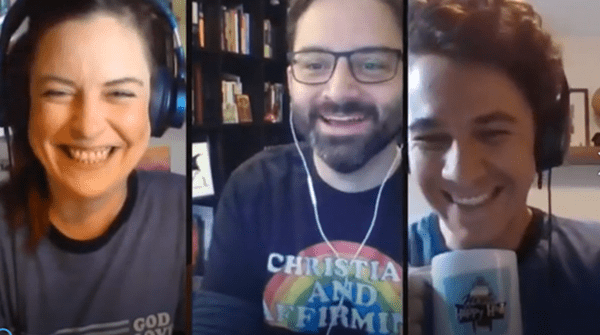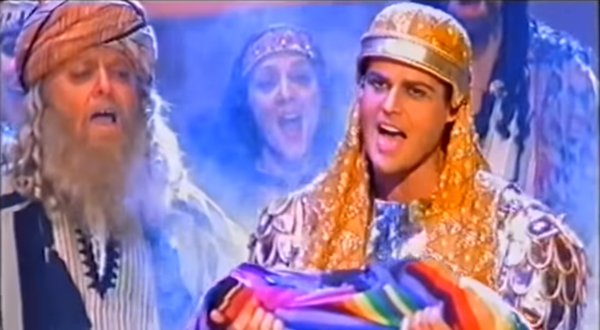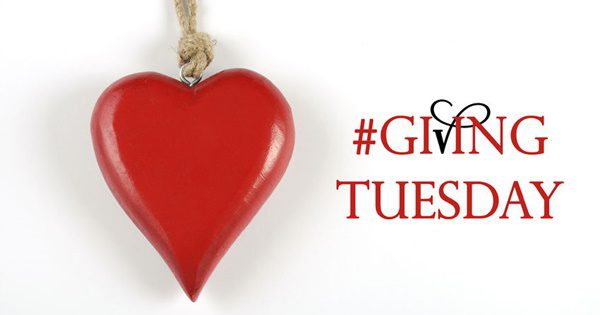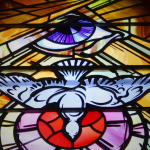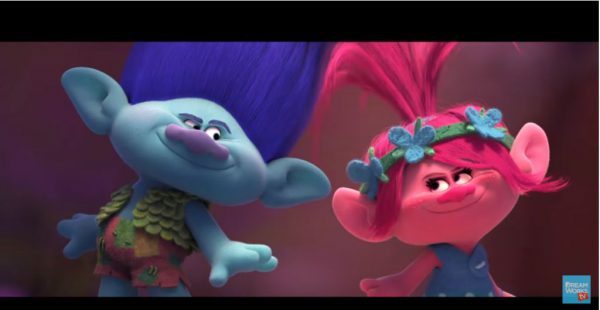 “Happiness isn’t something you put inside. It’s already there. Sometimes you just need someone to help you find it.”
“Happiness isn’t something you put inside. It’s already there. Sometimes you just need someone to help you find it.”
I know today’s problems won’t be resolved with a dance party and excessive glitter. Yet hidden within the hippy-trippy depths of a recent children’s film is a surprising wisdom that could help us find and nurture the joy we all hold within ourselves, joy that could send healing properties through this aching world. I’m talking, of course, about the 2016 animated feature, “Trolls.”
I admit, I didn’t have very high hopes for this movie when I sat down to watch it with my daughter over the Thanksgiving vacation. But I was pleasantly amazed. Not only is it a much-needed dose of fun, “Trolls” is it so ripe for mimetic analysis that I had to wonder if directors Mike Mitchell and Walt Dorhn are secret Girardians. (Coincidentally — or not — it was released one year to the date after Girard’s death). It artfully depicts the contagion of negative mimesis with sweeping misery and colorfully demonstrates the panacea of positive mimesis as joy washes through the finale and into our hearts on a wave of sweet acoustics. My one major critique is that it fails in the end to subvert the sacrificial mechanism… but I’m getting ahead of myself.
Synopsis with Spoilers
“Trolls” begins the way any good Girardian story should begin: with a human sacrifice. Ok, not exactly human. There are two dominant species in this film: the ultra-happy Trolls and the miserable Bergens. The Trolls are colorful living hairballs of joy who spend their days singing, dancing, and hugging. The Bergens, meanwhile, are massive, dull-hued, lumbering vessels of despair who long ago had discovered that eating Trolls was the key to pure happiness. Thus they have made a ritual of killing and eating Trolls one day a year, a day they have christened Trollstice. Although the Bergens have a king, the de facto leader is the one who holds the power to impart happiness to the masses, a high-priestess figure in charge of preparing the Trolls for consumption: Chef.
As the story opens, young Prince Gristle is all set for his first Trollstice, and Chef has chosen the sweetest, bubbliest Troll of all to bring him happiness – the infant princess Poppy. Poppy is plucked from the Troll Tree and given to Gristle, but no sooner has Gristle popped her in his mouth than he spits her out. It turns out that she’s a doll! All the Trolls have replaced themselves with dolls as they flee, in underground tunnels, to safety. The Bergens try to dig them up but are unsuccessful, and the Trolls find freedom just outside the border of the Bergens’ city. For failing to deliver “happiness” to the Bergens, Chef is expelled from their society.
In the short span before the opening credits, we see a ritualized sacrifice complete with a mob, an expulsion, and a vow of vengeance. And the story has just begun!
Fast forward 20 years. The Bergens have been utterly wretched and miserable since their last failed Trollstice, believing they will never again know true happiness. The Trolls, however, are thriving, and are about to celebrate the 20th anniversary of their escape to freedom with a wild, loud, glittery party, hosted by Princess Poppy. Only one Troll is chastising the others to be cautious: surly, sarcastic , non-singing Branch, who has prepared a bunker in case of another Bergen attack. Branch turns out to be right; the sparkling spectacle attracts the attention of Chef, who descends upon the Trolls. Most manage to hide, but she is able capture a handful and use them as her ticket back into society as she vows to bring back Trollstice… and reclaim her power. Now it’s up to Poppy to rescue her friends, and with some manipulation she is able to persuade a reluctant Branch to join her.
Tucked into this rescue adventure is a very deliberate Cinderella story. When Chef returns to the Bergen palace, where young Prince Gristle has assumed the role of King, she convinces him to bring back Trollstice and is able to resume her position as chef (though the bulk of her power is yet unrealized). The palace scullery maid, a timid, soft-spoken Bergen named Bridget, becomes Chef’s servant, and Chef treats her like dirt. Chef puts Bridget in charge of guarding the captured Trolls – all but one, Creek, whom Chef feeds to King Gristle.
By now, Poppy and Branch have caught up with their friends and even observed with horror Creek’s “gristly” fate. Poppy refuses to believe Creek is dead. She and Branch hide in Bridget’s room, awaiting their chance to rescue all the other Trolls. But on observing Bridget, Poppy not only feels genuine compassion for the horrible way she is treated, but also realizes that Bridget is in love with King Gristle. Poppy is unable to rescue her friends without being detected by Bridget, who tries to recapture them all. But Poppy convinces Bridget to spare them from being eaten by offering to help her win King Gristle’s heart. She and the Trolls, including the ever-reluctant Branch, help make over Bridget, hiding on her head and letting their hair grow down around them to conceal them in a hair-tent-wig which also serves the purpose of glammifying Bridget. She and King Gristle share a perfect date, in which Gristle shows Bridget (and the hidden Trolls) that he never swallowed Creek (and had been hiding him in a locket) because he was waiting for a “special occasion” – the renewal of Trollstice. King Gristle asks Bridget to be his date to Trollstice, but Bridget dashes away, leaving a roller skate behind.
In the end, the kindness Poppy and her friends show Bridget saves them all. The Trolls are able to leave Bridget and attempt to rescue Creek, only to discover when they find him that he has sold them all out in exchange for his own life. Creek helps Chef capture not only the friends who came to his rescue, but all the Trolls. All but Creek are thrown into a pot to be eaten, and in their despair, they lose their color. Branch, who has come to love Poppy for her optimism and kindness, breaks his vow to himself never to sing in order to sing to Poppy. With his love, she not only regains her color, but Branch himself brightens from gray to bright blue. The love and optimism they share restores color to all of the Trolls, the spark of happiness within them illuminated by Poppy and Branch despite their seemingly hopeless situation. But when the pot is opened once more, it’s Bridget, who lets them escape one last time. Bridget knows she does not need Trollstice to be happy, because the Trolls have already made her happier than she ever thought she would be by helping her find love. But, knowing what will happen to Bridget when it is discovered that she let the Trolls go, Poppy again comes to her rescue. The story culminates in Poppy and her friends teaching the Bergens that they can find happiness without eating Trolls because, “Happiness isn’t something you put inside. It’s already there. Sometimes you just need someone to help you find it.”
Analysis: From Cannibalism to Conversion
Sacrifice, scapegoating, revenge, the spread of negative and positive mimesis… the mimetic theory is strong in this one. But, some might say, if “Trolls” teaches that happiness is inside of us, doesn’t that lend credence to the myth of autonomy, that we don’t need anyone else because our desires and the ability to fulfill them come from within ourselves?
On the surface it may appear that way, but the message that happiness lies within us is not necessarily the same thing as the myth of autonomy. In fact, what the movie shows over and over is that the key to happiness that resides within all of us is our capacity for love, our capacity for relationship. It is relationship — love and friendship — that brings happiness to the Trolls, and they are able to revel in their happiness precisely because they care for one-another and live for each other.
In fact, the story arc of “Trolls” shows a moral evolution that humans are still in the process of undergoing. From the cannibalism at the beginning to the transformation from misery to joy through compassion and relationship at the end, “Trolls” tells a story of redemption we would all do well to heed. Technically, I suppose, Bergens eating Trolls is not cannibalism, but the message of the movie harkens to the belief that consuming one’s enemies, fairly common in some ancient societies and not fully gone today, is a way to absorb their essence and take their power. Absorbing the happiness of the Trolls was the whole point of Trollstice. The Trolls didn’t just taste good; they were a way for the Bergens to take happiness into themselves.
Even beyond the symbolism of cannibalism, the message that happiness is achieved, desire fulfilled, self-actualization realized only at the expense of an enemy… this is the message of sacrifice. And “Trolls” moves beyond sacrifice to mercy. The truth that the Bergens ultimately learn is that happiness comes not at the expense of others, but through relationship with them. And it’s not only the Bergens who learn this lesson. Branch also discovers this. In the beginning, he is reluctant to open himself to relationship with the other Trolls. We later learn that this is because his typical Trollish behavior (singing and dancing, that is) once attracted a Bergen who ate his grandmother. In his grief over his loss, he shut himself down and did not open himself to relationship until Poppy’s kindness coaxed it out of him. In his precaution to avoid his mortal enemy, he lost his color and his happiness, becoming a mimetic double of the Bergens he so dreaded. The revelation that he could regain his happiness through relationship, even relationship with his “enemies,” makes Branch’s conversion just as powerful (if not moreso) as the conversion of the Bergens.
Conclusion: Redemption For All?
My one complaint about this movie is that there is no redemption for Chef and Creek. In the final scene, they are expelled from the dance party that’s spreading joy and literally brightening the whole town. Just after the initial credits, both are seemingly eaten by a giant monster. I say “seemingly,” because this story is full of characters going into other characters’ mouths and miraculously coming back out again. So maybe there is still hope for Chef and Creek after all. A sequel (not just the new holiday special, which I have not yet seen) could possibly bring them redemption. For them to be redeemed, however, their selfish hearts would have to break open. Ironically, it was their insistence that they could only survive and find happiness at the expense of others that led to their expulsion. Chef was not content to find happiness in relationship with the Trolls or even with the Bergens; instead, she insisted upon control over them. Creek gets a little more sympathy, as his life truly was in danger, and I hope that reflection on how much his friends did to save him breaks his heart open with repentance (if he isn’t first digested.) I will admit there is something satisfying for the audience to see the “bad guys” get their comeuppance in the end, but if we the audience don’t wish to see their redemption, then we still need to learn the lesson that Trolls almost teaches us. Happiness is found in relationship with others – even our enemies – not at their expense.
Did I mention the awesome soundtrack? Cause this movie totally rocks. And on that note, I’m going to wrap up this article and dance. “Can’t stop the feeling…”
Image: Screenshot from Youtube: “Can’t Stop the Feeling!” Official Movie Clip – Trolls, by DreamworksTV
Stay in the loop! Like Teaching Nonviolent Atonement on Facebook!






